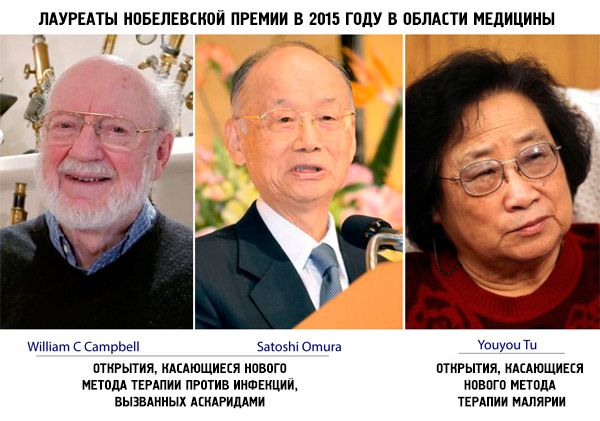New publications
New possibilities for "old" medicine
Last reviewed: 02.07.2025

All iLive content is medically reviewed or fact checked to ensure as much factual accuracy as possible.
We have strict sourcing guidelines and only link to reputable media sites, academic research institutions and, whenever possible, medically peer reviewed studies. Note that the numbers in parentheses ([1], [2], etc.) are clickable links to these studies.
If you feel that any of our content is inaccurate, out-of-date, or otherwise questionable, please select it and press Ctrl + Enter.
The Nobel Prize in Medicine was awarded in Sweden. For the first time in the history of Chinese science, the prize was awarded to a Chinese pharmacologist for the creation of a drug to treat malaria, which saved millions of lives.
This year's Nobel laureate was 84-year-old Tu Youyou.
50 years ago, she succeeded in isolating artemisinin from sweet wormwood, which later became one of the main components of a drug against malaria. Sweet wormwood was first mentioned in a work on traditional Chinese medicine in the 4th century (the text recommended using the plant for fevers).
As statistics show, over 15 years of using artemisinin, it was possible to save more than 200 million lives in Africa, and traditional Chinese medicine made a significant contribution to the fight against deadly infections. But in addition to this, artemisinin successfully coped with the 2003 epidemic that broke out in China. In this regard, the drug, which was obtained thanks to the knowledge of traditional medicine, received worthy recognition among Western specialists.
Western doctors have long refused to recognize the methods of traditional Chinese medicine, which were based on the teachings of the structure and functioning of the human body and the existence of life energy "qi", but it is difficult to deny that over 2 thousand years of practice, traditional medicine has reached a high level and can help in the treatment of many dangerous diseases that modern medicine cannot cope with.
Today, the situation is changing and after several decades of research, traditional Chinese medicine has gained recognition not only in its homeland, but also far beyond its borders.
Recently, more and more people are turning to specialists who practice these treatment methods for help.

By the way, a few months ago, Kanglaite was approved for use in the third stage of clinical trials. This drug contains active components and helps fight cancerous tumors. It contains substances from the bead plant, a grain crop that has been used in China since ancient times.
The first 2 phases of studies have already proven the effectiveness of Kanglaite in the treatment of late stages of lung, pancreatic and liver cancer.
If the third phase of testing is also successful, this drug will be the third, after aremisinin and ephedrine, which is derived from traditional Chinese medicine and used by Western specialists.
China is currently providing active support and financial assistance for the development of traditional medicine – in 2013 alone, more than 78 billion dollars were spent, which is 1/3 of the total amount allocated by the state for the development of medicine.
In May, the Chinese government released a plan to support traditional Chinese medicine in the national health system for five years and make traditional medicine competitive by introducing traditional Chinese medicine in at least one hospital in a city or county.
There is no doubt now that Tu Youyou's discovery will take traditional Chinese medicine to a new level, and the heritage that Chinese healers have collected and passed down from generation to generation for centuries will help scientists make more than one significant discovery.
